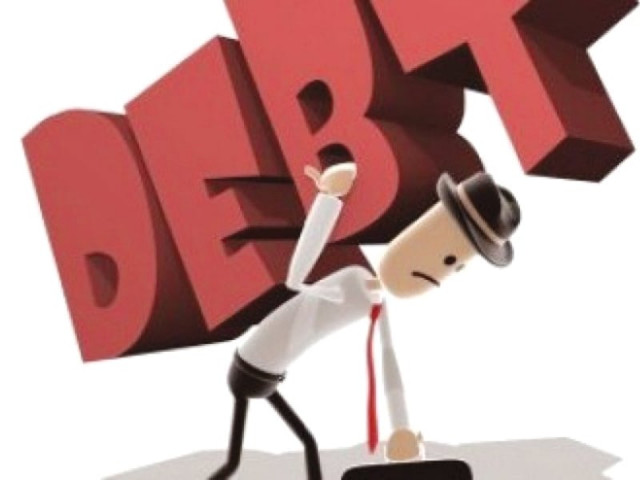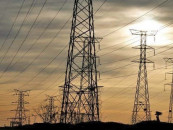Government borrowing: Domestic debt reaches a staggering Rs10.8t
Now equals 42% of GDP, SBP data shows.

Now equals 42% of GDP, SBP data shows. CREATIVE COMMONS
After increasing by a whopping 22.9% in just one year, domestic debt of the central government reached Rs10.8 trillion at the end of March, data released by the State Bank of Pakistan (SBP) shows.
Domestic debt now equals 42% of gross domestic product (GDP) after increasing by as much as Rs2 trillion since March 2013 when it totalled Rs8.8 trillion, or 38% of GDP.
Interestingly, data shows the bulk of the increase in domestic debt (Rs1.74 trillion) has taken place since the new government came into power in June 2013.
“The sharp build-up in debt is to finance the large fiscal deficit of the government. Data indicates that the fiscal deficit is likely to remain higher than the target,” a commercial banker told The Express Tribune while requesting anonymity.

“The pace of increase in domestic debt is alarming. In the first nine months of the current fiscal year, it increased by 20% year-on-year versus a 17% rise in the same period of the last fiscal year,” he said.
Total central government debt, including external debt, stood at Rs15.3 trillion at the end of March, up 15.2% from a year ago. External debt of the central government – which excludes IMF loans for balance of payment support – stood at Rs4.4 trillion at the end of March, registering little change over the preceding one year.
Under the Fiscal Responsibility and Debt Limitation Act 2005, the government was required to bring public debt under 60% of GDP by June 2013, and further reduce it by 2.5% of GDP every year afterwards. However, SBP data until December 2013 shows the debt-to-GDP ratio stands at 63.3% of GDP.
Central government’s domestic debt can be divided into long and short terms. The short-term debt component stood at Rs5.4 trillion, up 13.7% on a year-on-year basis. While government’s borrowing through market treasury bills (MTBs) declined 18.2% during the year-long period, the overall bump in the short-term debt was due to “MTBs for replenishment of cash.”
Instruments created to enable government borrowing from the SBP, MTBs for replenishment of cash accounted for more than half of the central government’s total short-term domestic debt. They amounted to Rs2.7 trillion at the end of March, up 51.8% year-on-year.
Central government long-term domestic debt – which is divided into permanent debt, unfunded debt and foreign currency loans – increased 33.8% to Rs5.3 trillion during the period under review. The amount of foreign currency loans remained flat at the negligible level of Rs4.5 billion.
However, the amount under the unfunded debt category witnessed an uptick of 9.5% mainly on the back of money borrowed through savings schemes (Rs2.1 trillion).
The largest share in the overall increase in domestic debt was recorded in the permanent debt category, which includes loans with maturities of over two years. For example, the size of debt under the Pakistan Investment Bonds (PIBs) ballooned to Rs2.3 trillion at the end of March. This is 111.4% higher than the corresponding period at the end of the third month of 2013.
Admittedly, the positive aspect of the change in the borrowing pattern is a reduction in the rollover risk faced by the government. However, it also burdens government finances with long-term debt-servicing costs, the commercial banker noted.
“Significant fiscal reforms are required to contain the fiscal deficit and reduce government borrowings,” he said.
Published in The Express Tribune, April 30th, 2014.
Like Business on Facebook, follow @TribuneBiz on Twitter to stay informed and join in the conversation.



















COMMENTS
Comments are moderated and generally will be posted if they are on-topic and not abusive.
For more information, please see our Comments FAQ